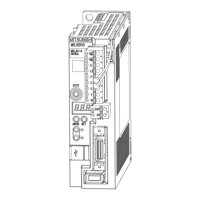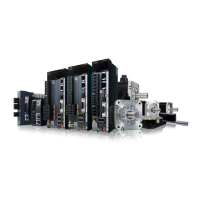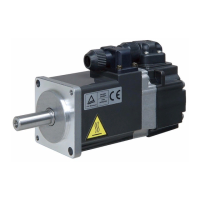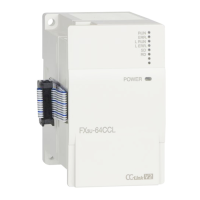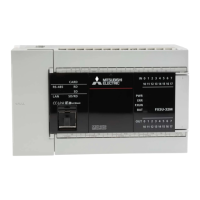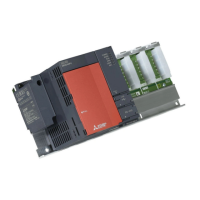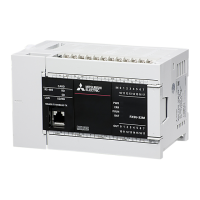3. SIGNALS AND WIRING
3 - 52
Note 1.
2.
P: position control mode, S: speed control mode, T: torque control mode
This is for the differential line driver pulse train input. For the open-collector pulse train input, connect as follows.
DOCOM 46
OPC 12
20
47
PP 10
PG 11
NP 35
NG 36
DICOM
DOCOM
DC24V
3. This diagram is for sink I/O interface. For source I/O interface, refer to section 3.9.3.
3.9.2 Detailed description of interfaces
This section provides the details of the I/O signal interfaces (refer to the I/O division in the table) given in
section 3.5. Refer to this section and make connection with the external device.
(1) Digital input interface DI-1
Turn on/off the input signal with a relay or open-collector transistor. The following is a connection
diagram for sink input. Refer to section 3.9.3 for source input.
⚂6.2k䕑
⚂5mA
TR
DC24V ± 10%
500mA
ࠬࠗ࠶࠴
࠻ࡦࠫࠬ࠲ߩ႐ว
EM2
ߥߤ
ࠨࡏࠕࡦࡊ
DICOM
V
CES
҇ 1.0V
I
CEO
҇ 100μA
(2) Digital output interface DO-1
A lamp, relay or photocoupler can be driven. Install a diode (D) for an inductive load, or install an inrush
current suppressing resistor (R) for a lamp load.
(Rated current: 40 mA or less, maximum current: 50 mA or less, inrush current: 100 mA or less) A
maximum of 2.6 V voltage drop occurs in the servo amplifier.
The following shows a connection diagram for sink output. Refer to section 3.9.3 for source output.
(ᵈ)DC24V ± 10%
500mA
࠳ࠗࠝ࠼ߩᭂᕈࠍ
㑆㆑߃ࠆߣࠨࡏࠕ
ࡦࡊ߇㓚ߒ߹ߔޕ
ࠨࡏࠕࡦࡊ
ALM
ߥߤ
⽶⩄
DOCOM
Note. If the voltage drop (maximum of 2.6 V) interferes with the relay operation, apply high
voltage (maximum of 26.4 V) from external source.
24 V DC
24 V DC
(Note) 24 V DC
Servo amplifier
For transistor
pproximately 5 mA
Switch
EM2,
etc.
pproximately 6.2kȍ
Servo amplifier
LM,
etc.
Load
If polarity of diode is
reversed, servo amplifier
will malfunction.
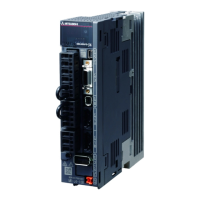
